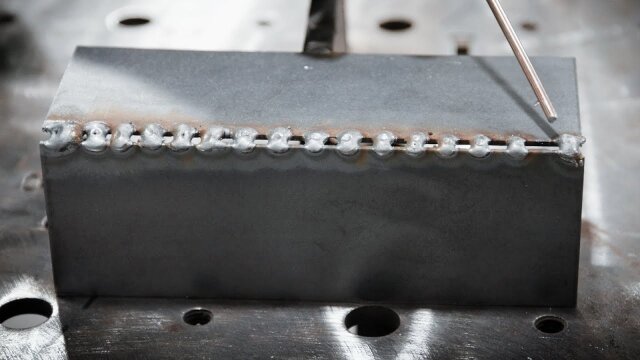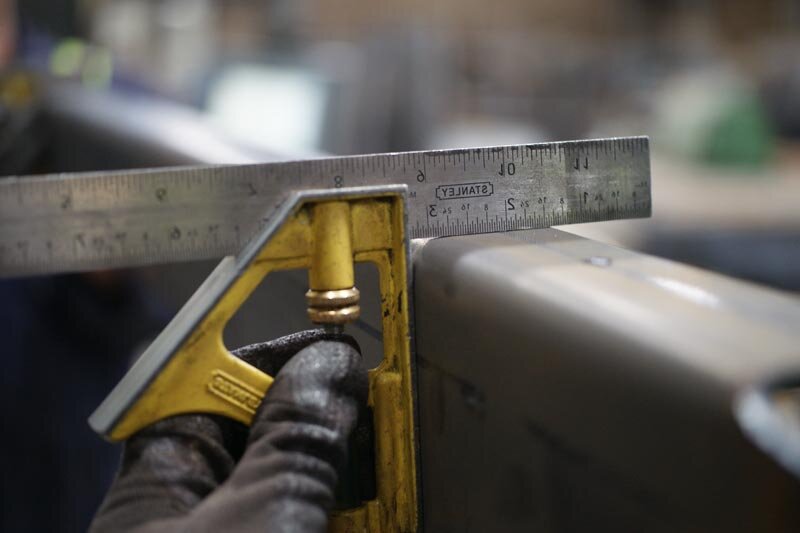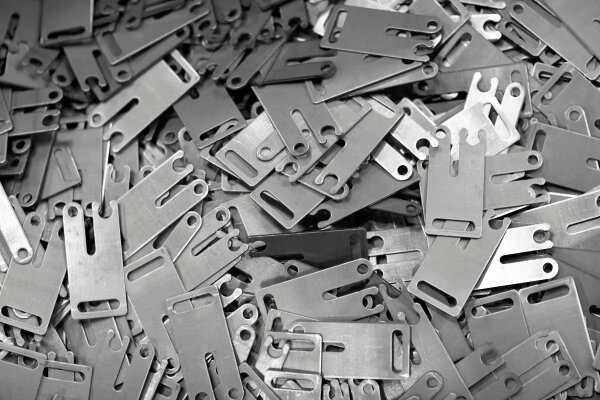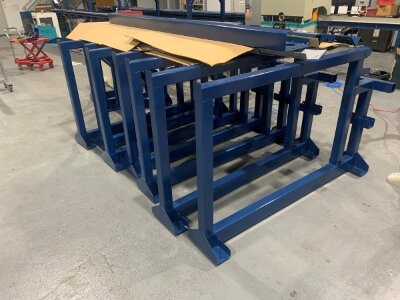Produkcja złożonych części metalowych stanowi ciągłe wyzwanie pod względem jakości, kosztów i czasu. Odlewanie ciśnieniowe aluminium rozwiązuje te problemy, oferując niezawodny, wydajny proces, który wytwarza precyzyjne komponenty na dużą skalę. Ta sprawdzona metoda zapewnia wyjątkową wartość dla inżynierów i producentów poszukujących spójnych wyników.
Chcesz dowiedzieć się, jak odlewanie ciśnieniowe aluminium może zmienić Twoje operacje produkcyjne? Ten przewodnik obejmuje wszystko, od podstawowych zasad po zaawansowane aplikacje, pomagając w podejmowaniu świadomych decyzji dotyczących następnego projektu.
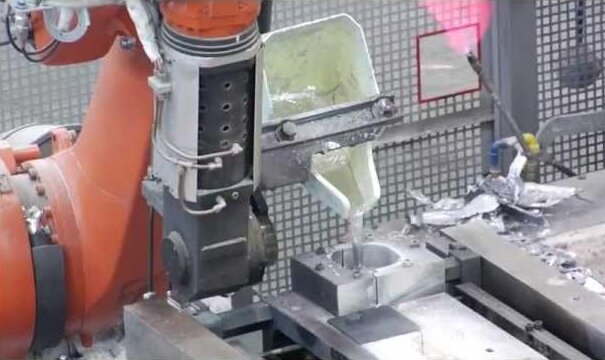
Czym jest odlewanie ciśnieniowe aluminium?
Odlewanie ciśnieniowe aluminium to proces produkcyjny, w którym powstają precyzyjne i gładkie części metalowe. Polega on na wtryskiwaniu stopionego aluminium do formy pod wysokim ciśnieniem, dzięki czemu metal przyjmuje kształt formy.
Proces ten znany jest z tworzenia części o doskonałej odporności na korozję i wysokiej przewodności. Odlewanie ciśnieniowe aluminium zapewnia również wysoki stosunek wytrzymałości do masy, dzięki czemu idealnie nadaje się do lekkich, ale trwałych komponentów. Pozwala na szybką produkcję i jest opłacalny, szczególnie w przypadku dużych serii.
Proces odlewania ciśnieniowego aluminium
Proces odlewania ciśnieniowego przebiega według precyzyjnej sekwencji kroków, które przekształcają surowe aluminium w gotowe komponenty. Przeanalizujmy każdy z nich:
Krok 1: Przygotowanie matrycy
Proces rozpoczyna się od przygotowania matrycy, która składa się z dwóch połówek tworzących formę dla części. Matryce te są zwykle wykonane ze stali o wysokiej wytrzymałości, aby wytrzymać ciśnienie i temperaturę stopionego aluminium.
Krok 2: Topienie i wtryskiwanie aluminium
Gdy matryca jest gotowa, aluminium jest topione w piecu. Stopione aluminium jest następnie wtryskiwane do matrycy pod wysokim ciśnieniem.
Krok 3: Chłodzenie i krzepnięcie
Po wtrysku stopione aluminium chłodzi się i krzepnie wewnątrz matrycy. Czas chłodzenia zależy od grubości części, ale zwykle następuje szybko dzięki systemowi chłodzenia formy.
Krok 4: Wyrzucenie odlewu
Po zestaleniu się części, połówki matrycy są rozdzielane, a część jest wyrzucana. Odbywa się to ostrożnie, aby uniknąć uszkodzenia nowo utworzonego elementu.
Krok 5: Operacje po castingu (Gratowanie, Obróbka powierzchniowa)
Po wyrzuceniu część może wymagać dodatkowych etapów wykańczania. Może to obejmować usunięcie nadmiaru materiału, zwanego błyskiem, który utworzył się wokół krawędzi części.
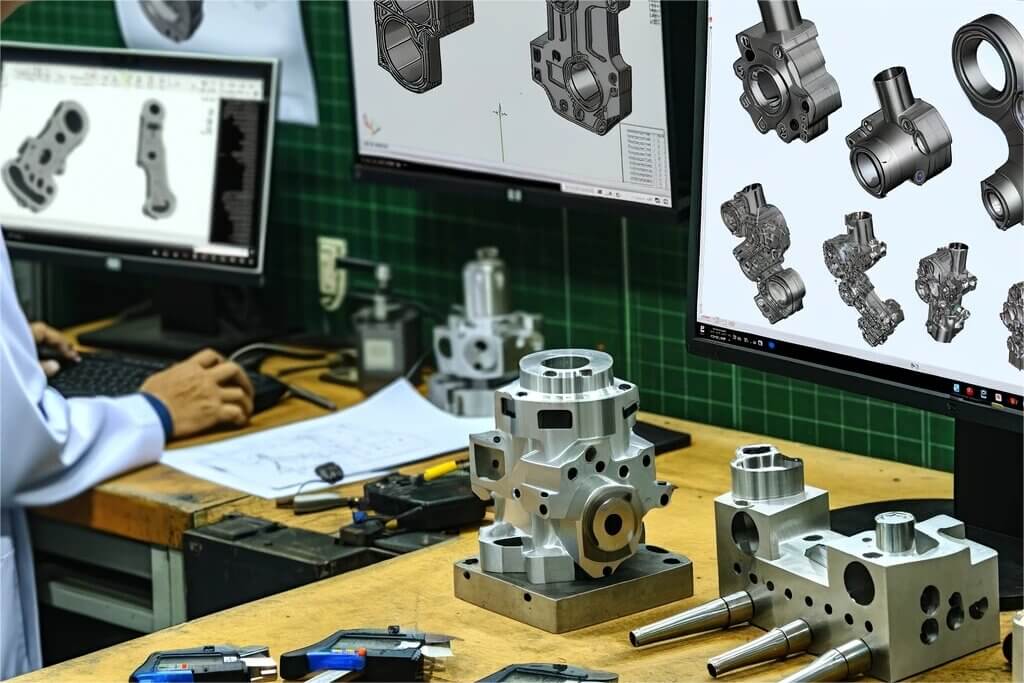
Rodzaje odlewów aluminiowych
Odlewanie ciśnieniowe aluminium ma kilka odmian, z których każda jest dostosowana do konkretnych potrzeb produkcyjnych. Metody te różnią się sposobem wprowadzania stopionego aluminium do formy i warunkami, w których ulega ono zestaleniu.
Odlewanie ciśnieniowe pod wysokim ciśnieniem
HPDC polega na wtryskiwaniu stopionego aluminium do stalowej formy pod ekstremalnym ciśnieniem, zazwyczaj od 10 000 do 25 400 psi. Metoda ta jest idealna do produkcji skomplikowanych kształtów o wąskich tolerancjach i gładkich wykończeniach powierzchni.
Niskociśnieniowe odlewanie ciśnieniowe
LPDC wykorzystuje kontrolowane niskie ciśnienie do wypełnienia gniazda formy stopionym aluminium, zapewniając spójne i precyzyjne wypełnienie. Metoda ta minimalizuje porowatość i jest szczególnie odpowiednia do tworzenia symetrycznych komponentów, takich jak koła lub części konstrukcyjne.
Odlewanie próżniowe
Odlewanie próżniowe stosuje podciśnienie do wnęki formy, wciągając stopione aluminium do formy. Proces ten zmniejsza uwięzienie powietrza i porowatość, co skutkuje gęstszymi odlewami o wyższej jakości.
Odlewanie ciśnieniowe
Odlewanie ciśnieniowe łączy w sobie elementy kucia i odlewania poprzez zastosowanie wysokiego ciśnienia podczas krzepnięcia. Metoda ta eliminuje porowatość i poprawia właściwości mechaniczne, tworząc części o wyjątkowej wytrzymałości i trwałości.
Zalety odlewania ciśnieniowego aluminium
Odlewanie ciśnieniowe aluminium ma wiele zalet, dzięki czemu jest popularnym wyborem wśród producentów. Oto najważniejsze z nich:
Lekkie i wytrzymałe produkty
Odlewanie ciśnieniowe aluminium tworzy części, które są zarówno lekkie, jak i wytrzymałe. Naturalne właściwości aluminium sprawiają, że idealnie nadaje się ono do zastosowań w branżach takich jak motoryzacja i lotnictwo, gdzie zmniejszenie masy ma kluczowe znaczenie dla lepszej wydajności.
Efektywność kosztowa
Odlewanie ciśnieniowe aluminium jest opłacalną opcją dla produkcji na dużą skalę. Chociaż koszty oprzyrządowania mogą być początkowo wysokie, wydajny proces pozwala na szybką produkcję wielkoseryjną, obniżając cenę za jednostkę.
Najwyższa dokładność wymiarowa
Wysokociśnieniowy proces wtrysku zapewnia doskonałą precyzję. Odlewanie ciśnieniowe aluminium produkuje części o wąskich tolerancjach i stałych wymiarach, zmniejszając potrzebę dodatkowej obróbki.
Zwiększone rozpraszanie ciepła
Aluminium ma doskonałą przewodność cieplną, dzięki czemu idealnie nadaje się do zastosowań wrażliwych na ciepło. Części odlewane ciśnieniowo skutecznie rozpraszają ciepło, co jest niezbędne w branżach takich jak elektronika i motoryzacja.
Złożone geometrie i skomplikowane wzory
Odlewanie ciśnieniowe aluminium może wytwarzać części o złożonych kształtach i skomplikowanych cechach. Proces ten pozwala na szczegółowe projekty, cienkie ścianki i złożone geometrie, które mogą stanowić wyzwanie w przypadku innych metod produkcji.
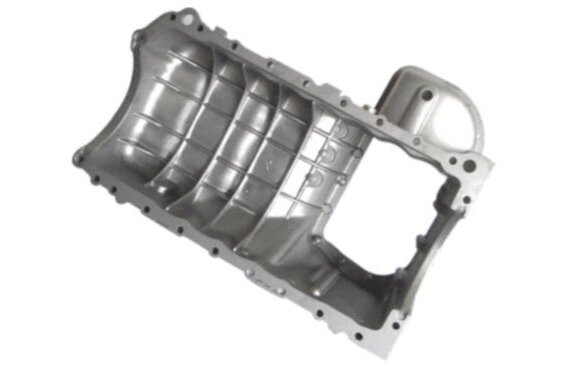
Wyzwania związane z odlewaniem ciśnieniowym aluminium
Chociaż odlewanie ciśnieniowe aluminium oferuje wiele korzyści, wiąże się również z kilkoma wyzwaniami, które producenci muszą pokonać, aby zapewnić wysoką jakość produkcji. Poniżej przedstawiamy niektóre z najczęstszych problemów napotykanych w tym procesie:
Problemy z porowatością
Porowatość występuje, gdy gazy, takie jak powietrze lub wodór, zostają uwięzione w stopionym aluminium podczas odlewania. Powoduje to powstawanie wewnętrznych pustek lub defektów powierzchniowych, które mogą zmniejszać wytrzymałość mechaniczną, szczelność ciśnieniową i jakość.
Rozwiązania obejmują optymalizację projektu formy, ulepszenie systemów wentylacyjnych i udoskonalenie stopu w celu zmniejszenia uwięzienia gazu.
Wady powierzchni i wtrącenia
Wady powierzchniowe, takie jak pęcherze, wtrącenia i szorstkie wykończenia, często wynikają z zanieczyszczeń w stopionym aluminium lub złej konserwacji formy. Wady te osłabiają odlew i mogą wpływać na jego estetykę.
Aby temu zapobiec, konieczne jest dokładne czyszczenie form, odpowiednia obróbka stopu i utrzymywanie stałej temperatury formy.
Pękanie na gorąco
Pękanie na gorąco (lub rozrywanie na gorąco) występuje podczas końcowych etapów krzepnięcia, gdy odlew jest nadal półstały. Dzieje się tak z powodu nierównomiernego skurczu termicznego lub koncentracji naprężeń w słabych punktach odlewu.
Aby zapobiec pękaniu na gorąco, producenci powinni zapewnić jednolitą grubość ścianek, unikać ostrych narożników w projektach i kontrolować szybkość chłodzenia podczas krzepnięcia.
Jaki jest najlepszy odlew aluminiowy?
Najlepszy stop aluminium do odlewania ciśnieniowego zależy od konkretnego zastosowania. Jednak A380 jest najczęściej stosowanym stopem ze względu na doskonałą równowagę między odlewalnością, trwałością i opłacalnością. Zapewnia dobrą płynność, przewodność cieplną i odporność na pękanie na gorąco, dzięki czemu idealnie nadaje się do skomplikowanych projektów i zastosowań cienkościennych.
Inne godne uwagi stopy obejmują:
- A360: Znane z doskonałej odporności na korozję i szczelności ciśnieniowej, odpowiednie do pracy w wysokich temperaturach i trudnych warunkach.
- A383 (ADC12): Oferuje lepszą charakterystykę wypełniania w niższych temperaturach, idealną do skomplikowanych kształtów i szczegółowych projektów.
- A356: Popularny w zastosowaniach lotniczych i przemysłowych ze względu na swoją spawalność i trwałość.
Typowe zastosowania odlewów ciśnieniowych z aluminium
Odlewy aluminiowe są szeroko stosowane w różnych gałęziach przemysłu, ponieważ wytwarzają lekkie, trwałe i złożone komponenty o wysokiej precyzji. Poniżej znajdują się niektóre z jego najczęstszych zastosowań:
Branża motoryzacyjna:
- Bloki silnika
- Obudowy skrzyni biegów
- Koła
- Elementy konstrukcyjne
Lotnictwo i kosmonautyka:
- Części silnika
- Konstrukcje skrzydeł
- Podwozie
Elektroniki użytkowej:
- Obudowy do smartfonów
- Obudowa laptopa
- Radiatory
- Obudowy kamer
Sprzęt przemysłowy:
- Obudowy
- Wsporniki
- Przekładnie
Urządzenia medyczne:
- Części do skanerów MRI
- Obudowy urządzeń ultradźwiękowych
- Narzędzia chirurgiczne
- Komponenty przenośnej pompy tlenowej
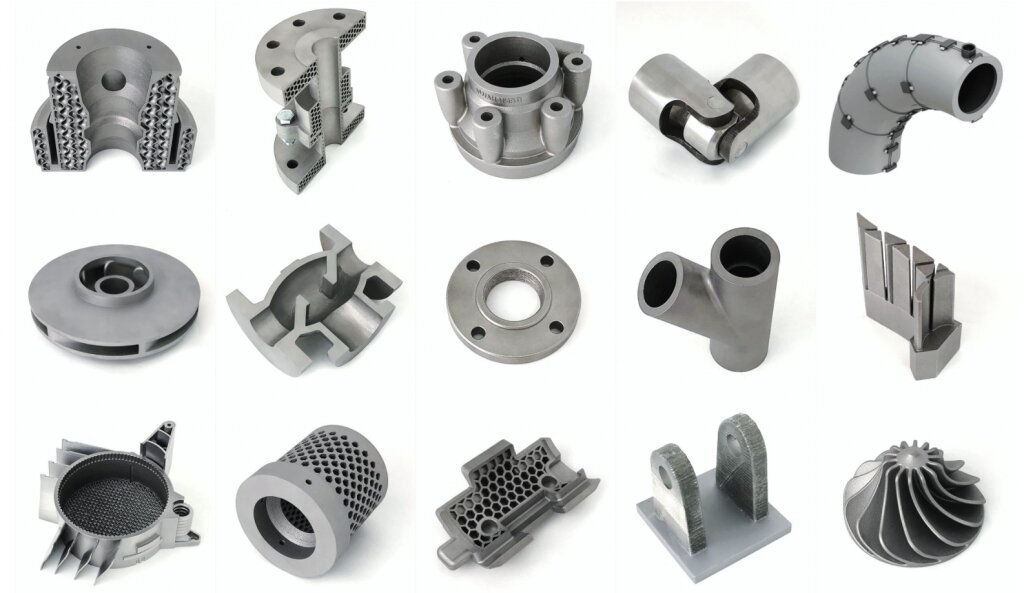
Alternatywy dla odlewania ciśnieniowego - odlewanie piaskowe i inwestycyjne
Gdy odlewanie ciśnieniowe nie jest optymalne, odlewanie piaskowe i odlewanie inwestycyjne stają się realnymi alternatywami. Każda z tych metod oferuje unikalne zalety i nadaje się do konkretnych zastosowań.
Odlewanie piasku
Odlewanie piaskowe polega na tworzeniu formy z piasku do wlewania stopionego metalu. Proces ten jest bardzo wszechstronny i opłacalny w przypadku niskich i średnich wielkości produkcji.
Zalety odlewania w piasku:
- Niskie koszty oprzyrządowania: Idealny do prototypów lub małych serii produkcyjnych dzięki niedrogim formom.
- Wszechstronność materiału: Działa z prawie każdym stopem żelaznym lub nieżelaznym.
- Elastyczność rozmiaru: Może produkować części o wadze od kilku uncji do ponad 200 ton.
Casting inwestycyjny
Odlewanie inwestycyjne wykorzystuje woskowy wzór pokryty ceramiką do stworzenia formy. Wosk jest topiony, a stopiony metal jest wlewany do ceramicznej powłoki w celu uzyskania precyzyjnych komponentów.
Zalety odlewania inwestycyjnego:
- Wąskie tolerancje: Produkuje części o doskonałej dokładności wymiarowej i minimalnych wymaganiach w zakresie obróbki.
- Złożone geometrie: Zdolny do tworzenia skomplikowanych projektów bez konieczności rysowania kątów.
- Doskonałe wykończenie powierzchni: Zapewnia gładsze wykończenie niż odlewanie piaskowe lub kokilowe.
Wnioski
Odlewanie ciśnieniowe aluminium oferuje wszechstronne, opłacalne rozwiązanie do produkcji wysokiej jakości części w różnych branżach. Jego zalety obejmują lekkość, wytrzymałość, doskonałą dokładność wymiarową i zdolność do tworzenia złożonych geometrii.
Niezależnie od tego, czy potrzebujesz komponentów samochodowych, części lotniczych czy obudów elektroniki użytkowej, odlewy aluminiowe zapewniają wydajność i precyzję wymaganą w wymagających zastosowaniach.
Chcesz dowiedzieć się, w jaki sposób odlewanie ciśnieniowe aluminium może przynieść korzyści Twojemu kolejnemu projektowi? Skontaktuj się z nami aby uzyskać bezpłatną konsultację i wycenę.
Hej, jestem Kevin Lee

Przez ostatnie 10 lat byłem zanurzony w różnych formach produkcji blach, dzieląc się tutaj fajnymi spostrzeżeniami z moich doświadczeń w różnych warsztatach.
Skontaktuj się z nami

Kevin Lee
Mam ponad dziesięcioletnie doświadczenie zawodowe w produkcji blach, specjalizując się w cięciu laserowym, gięciu, spawaniu i technikach obróbki powierzchni. Jako dyrektor techniczny w Shengen, jestem zaangażowany w rozwiązywanie złożonych wyzwań produkcyjnych i napędzanie innowacji i jakości w każdym projekcie.

